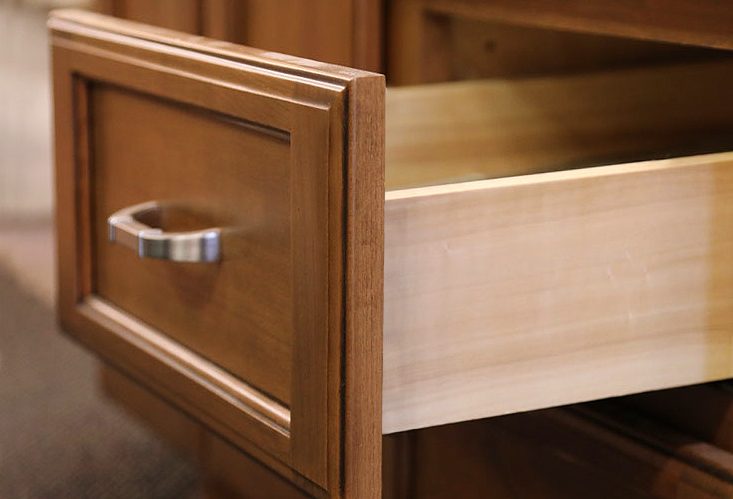Drawer laser engraving is a technique used to create detailed, precise designs or text on the surface of drawer fronts or other wood surfaces using a laser. Here’s a detailed explanation of how this process works:
1. Preparation
Design Creation
- Graphic Design: The first step is to create or choose a design that will be engraved onto the drawer. This design is typically created using graphic design software such as Adobe Illustrator or CorelDRAW.
- Vector Files: The design is often saved as a vector file (e.g., .ai, .svg) to ensure that it can be scaled and modified without losing quality.
Material Preparation
- Drawer Surface: The drawer front or other material is prepared for engraving. This might involve sanding the surface to ensure it is smooth and clean.
2. Laser Engraving Process
Laser Engraver Setup
- Machine Calibration: The laser engraver is set up and calibrated to ensure accurate and precise engraving. This includes adjusting settings such as laser power, speed, and resolution based on the material and design.
- Material Placement: The drawer front is securely placed on the laser engraver’s bed. The material is aligned to ensure that the engraving is in the correct position.
Engraving Execution
- Laser Operation: The laser engraver uses a focused beam of light to etch the design into the material. The laser removes a thin layer of the material to create the engraving.
- Controlled by Software: The engraving is controlled by the software, which directs the laser according to the design file. The software manages the movement of the laser and ensures that the engraving is executed with precision.
3. Post-Engraving Finishing
Cleaning
- Removing Residue: After the engraving is complete, any residue or dust from the engraving process is cleaned off the surface of the drawer.
- Inspection: The engraved design is inspected to ensure it meets quality standards and is free from defects.
Finishing Touches
- Sealing or Coating: Depending on the material and design, a finish or sealant may be applied to protect the engraved area and enhance its appearance. This could include varnishes, stains, or other protective coatings.
4. Advantages of Laser Engraving
- Precision: Laser engraving allows for high levels of detail and accuracy, producing intricate designs with sharp edges.
- Consistency: The laser ensures that each engraving is consistent, which is especially important for mass production or repeated designs.
- Versatility: Laser engraving can be used on a variety of materials including wood, acrylic, metal, and more, making it versatile for different applications.
- No Physical Contact: The process does not involve physical contact with the material, which reduces the risk of damage during engraving.
5. Considerations
- Material Choice: Different materials respond differently to laser engraving. For example, wood may produce a different result compared to acrylic or metal.
- Design Complexity: More complex designs may require longer engraving times and more advanced equipment.
- Safety: Proper safety measures should be followed when operating laser equipment, including protective eyewear and proper ventilation.
Summary
Drawer laser engraving is a precise and versatile technique for adding detailed designs or text to drawer fronts or other surfaces. It involves creating a design, setting up and calibrating the laser engraver, executing the engraving, and applying any finishing touches. The result is a high-quality, consistent engraving that enhances the aesthetic appeal of the drawer or furniture.
Ordering Solid Wood Drawer Boxes
If you need solid wood drawer boxes for a new home, remodeling project, or simply a replacement drawer we can help! We accept orders of any size and ship anywhere in the United States and Canada. It’s quick and easy to get solid wood drawer boxes from Drawer Connection and best of all, we are affordable. With direct from the manufacture pricing you know you’re getting exceptional drawers which fit your budget.







